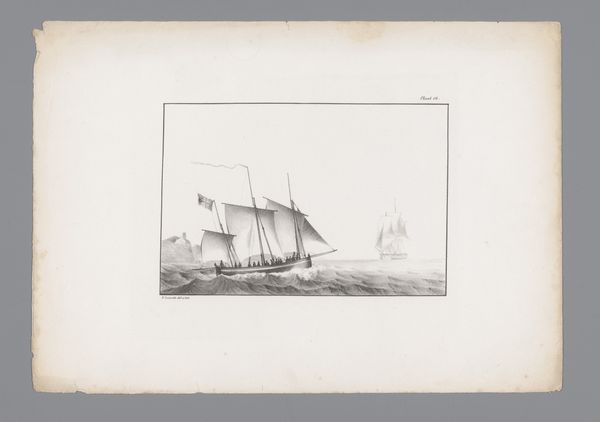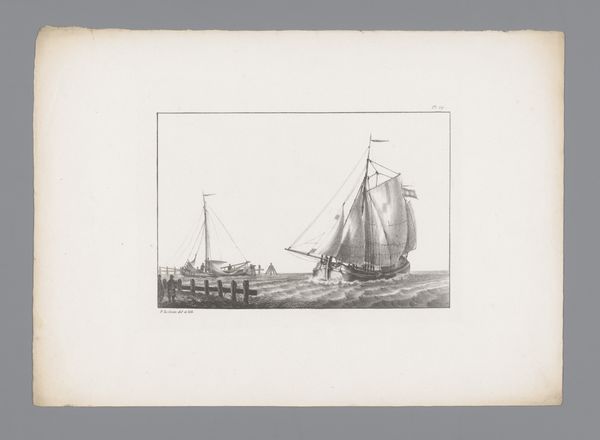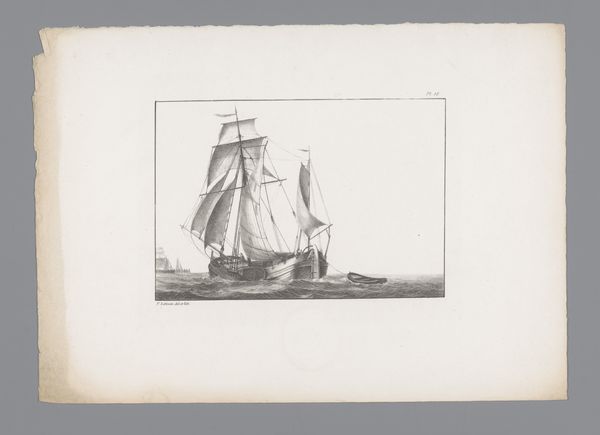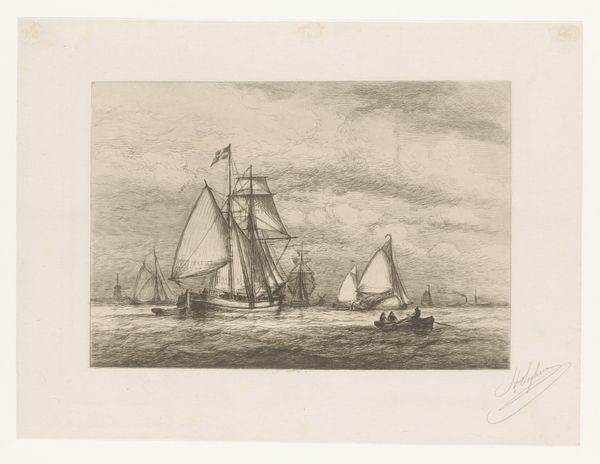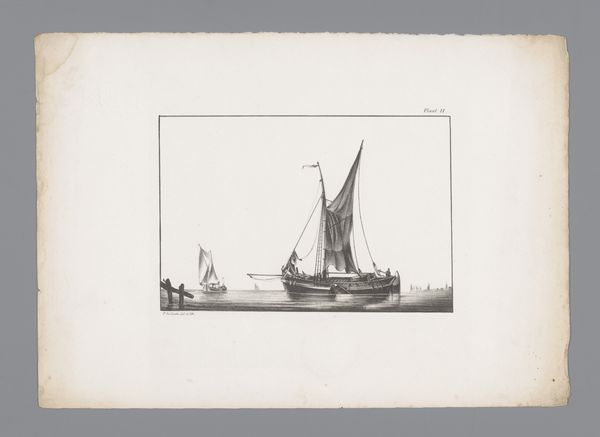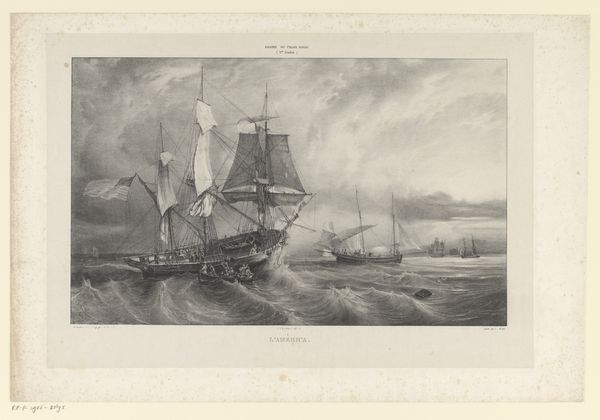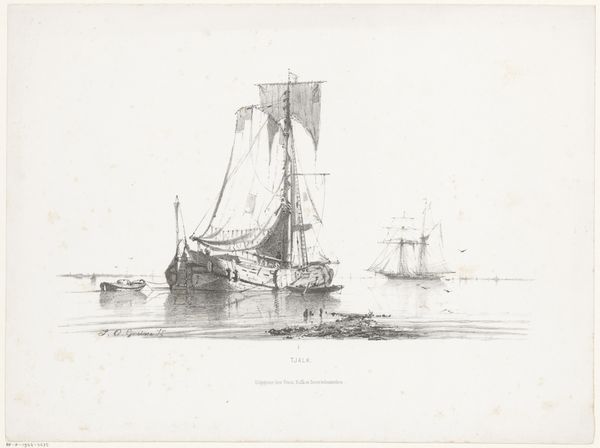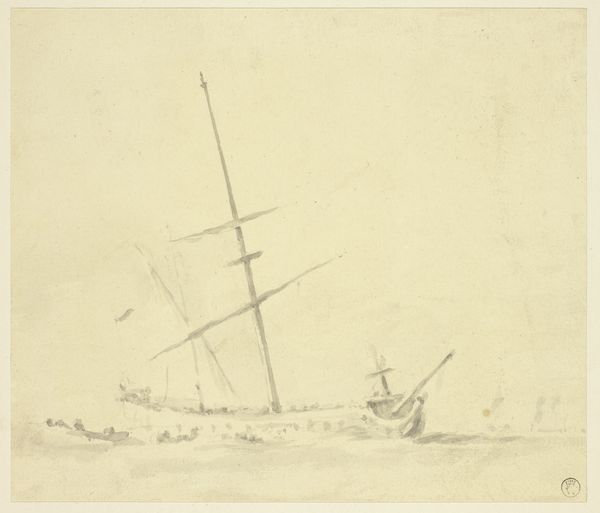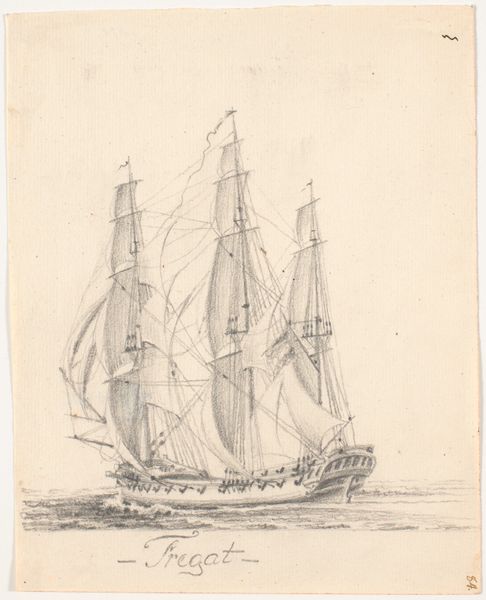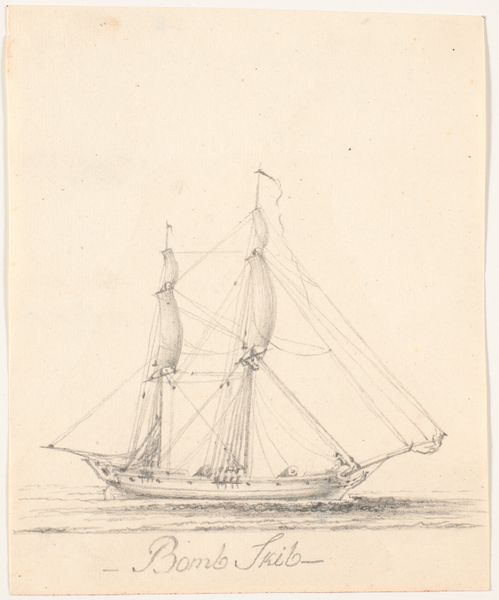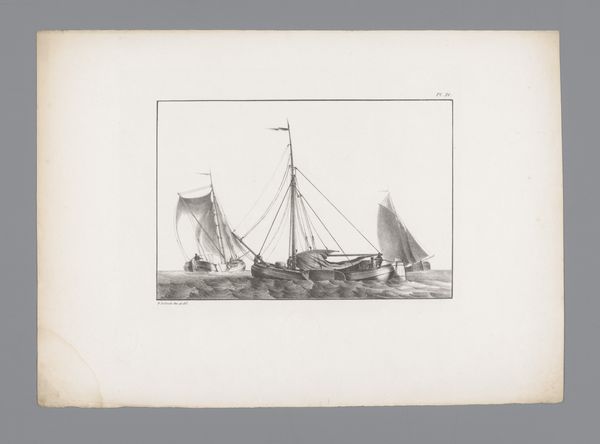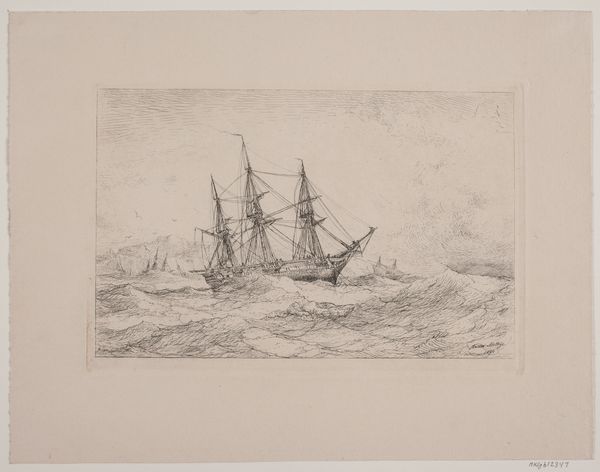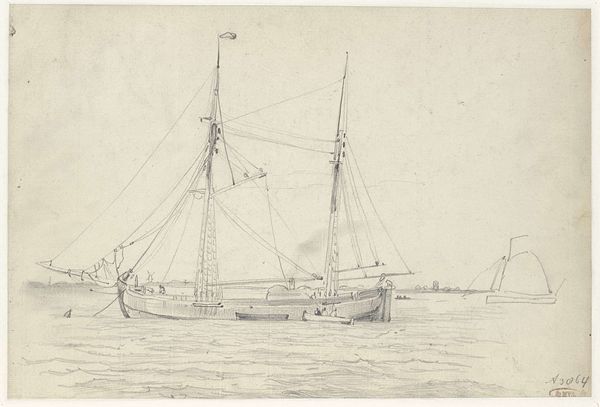
drawing, print, etching, pencil
#
drawing
#
boat
#
ink paper printed
# print
#
etching
#
pencil sketch
#
landscape
#
etching
#
romanticism
#
pencil
Dimensions: sheet: 9 3/4 x 3 5/8 in. (24.8 x 9.2 cm)
Copyright: Public Domain
Editor: This is "Boats Moored Near Cliffs of Dover," dating somewhere between 1800 and 1900 by T. H. Yudin. It's an etching and pencil drawing. There is a lot of detail showing these boats docked on what looks like a busy day at the harbor. What captures your attention when you view this print? Curator: The labor and resources required for maritime transport in the 19th century become very present when observing the process. Notice the type of paper used and the method of reproduction with the etching technique: we are made aware of the artistic industry of the period. Considering its intended use, do you feel this was intended for mass consumption? Editor: Well, it being a print suggests a wider audience, but the delicate detail also lends itself to something more precious. Was etching a popular method for wider circulation or something more fine art-focused? Curator: Etching provided a method to produce imagery with repeatable accuracy, cheaper than individual works, which is often consumed by the bourgeois to mirror the aristocratic art consumption. Also, note how the tools involved – the etching needle, the acid – leave their traces. The labor is literally inscribed within the image. How might that speak to social class? Editor: It speaks volumes. I imagine those who produced this etching likely wouldn't have been able to afford artwork like it themselves, or a boat, for that matter. The piece almost becomes a commentary through its production. Curator: Precisely. The materiality of the image, its very creation, becomes inseparable from the social conditions that made it possible. From paper production to artistic labor, we see a whole network of resources and workers embedded in this single print. Editor: I didn’t initially consider all that went into making it! The economic implications behind even a simple drawing shed so much light on the period.
Comments
No comments
Be the first to comment and join the conversation on the ultimate creative platform.
